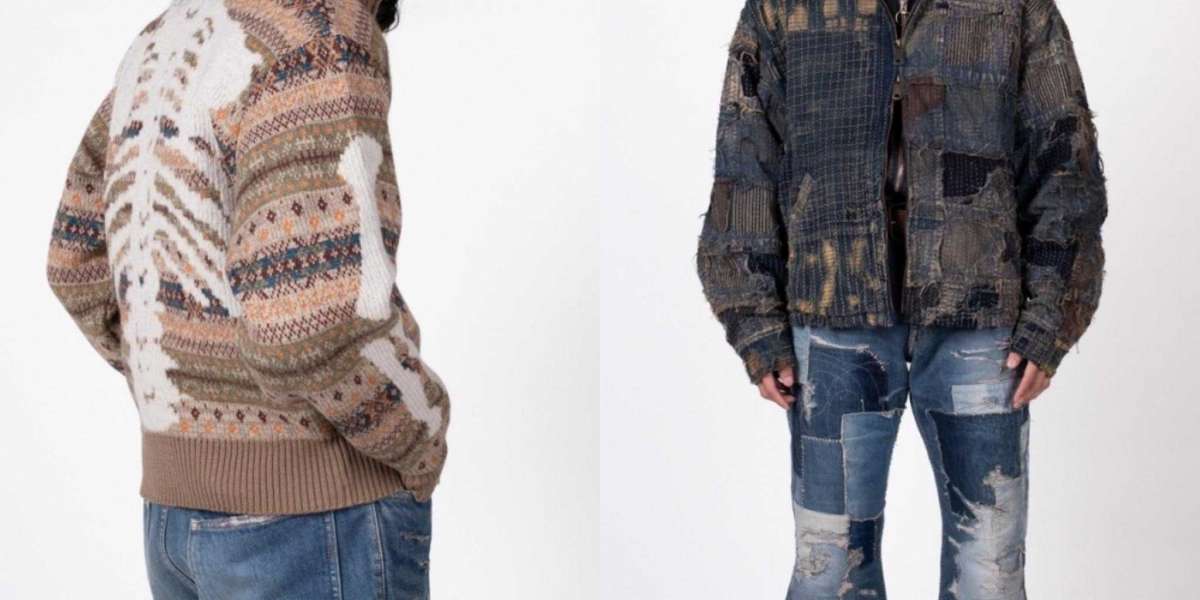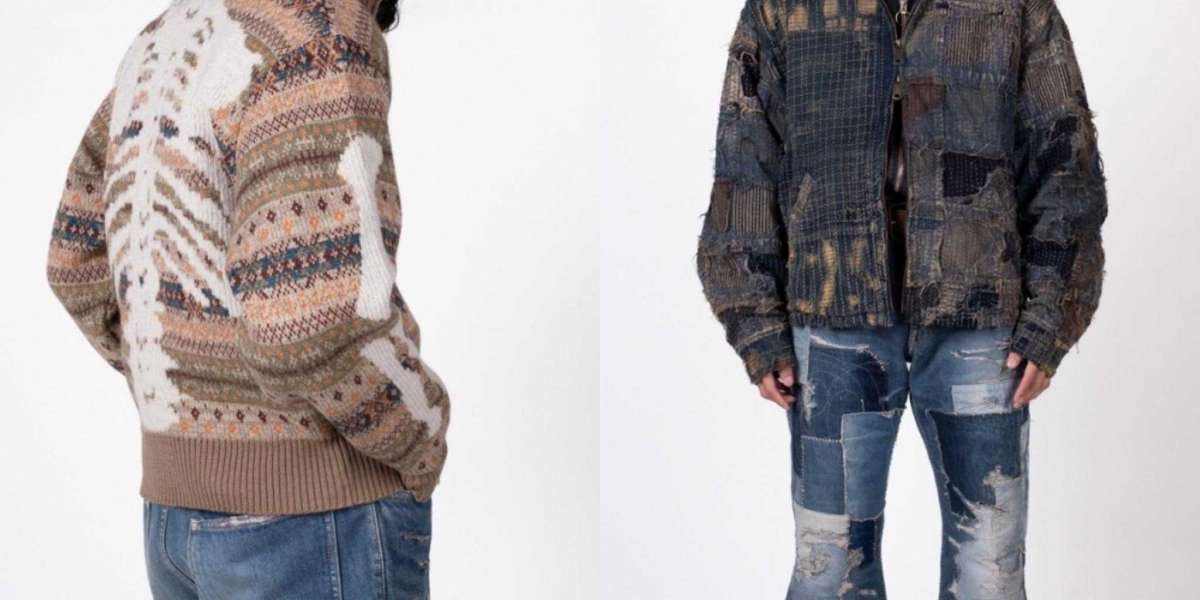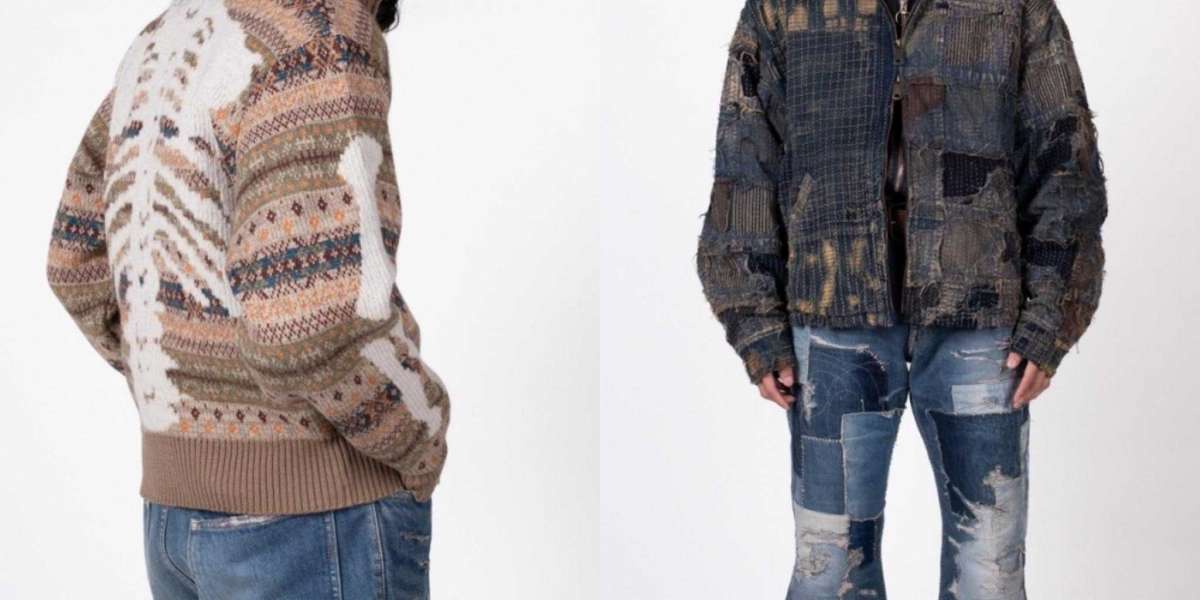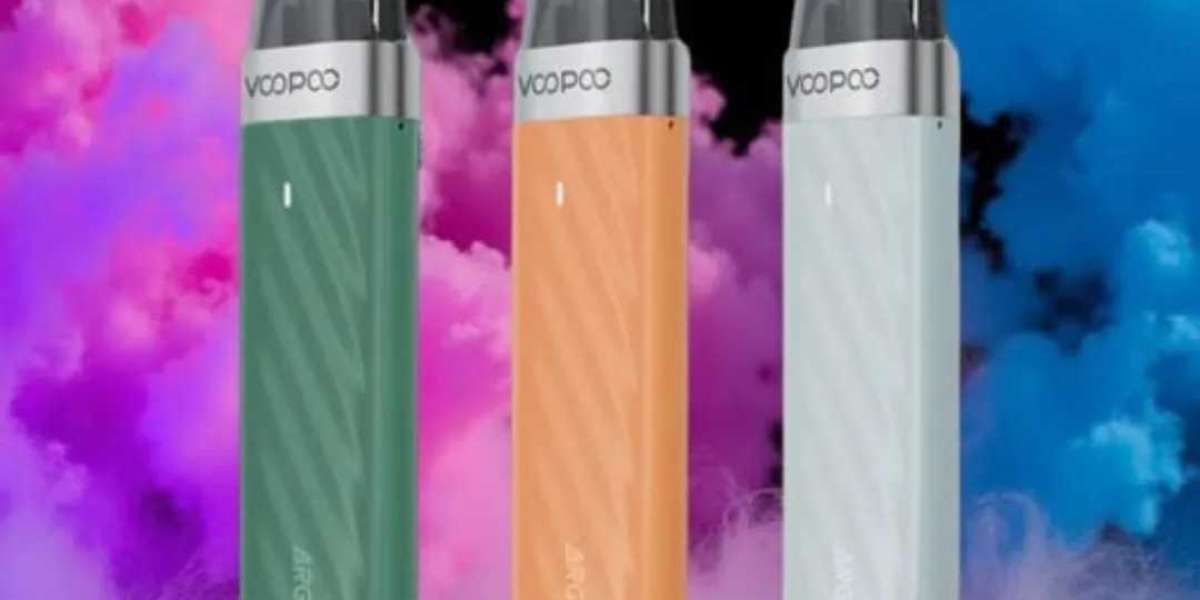Kapital and Corteiz are two distinct streetwear brands, each with a unique origin and identity. Kapital, hailing from Japan, was founded in the 1980s and has built a legacy rooted in heritage, craftsmanship, and Americana influence. Corteiz, a UK-based brand founded in 2017 by Clint419, is a much newer player but one that has rapidly gained notoriety through exclusivity, guerrilla marketing, and cultural relevance. Though they both exist in the broader streetwear space, they serve very different purposes and audiences. Understanding their roots helps frame the deep contrast in their branding and fashion philosophies.
Philosophy and Inspiration
Kapital blends Japanese tradition with American vintage and workwear themes. The brand often references folk art, 1960s counterculture, and Eastern spiritualism. Their philosophy leans into craftsmanship, detail, and storytelling. Corteiz operates with a rebellious, anti-establishment mentality, driven by urban youth culture and social commentary. Their slogan “Rules the World” exemplifies this, signaling their resistance to mainstream fashion norms. Corteiz isn't just about clothes—it's about power, voice, and movement. Kapital’s inspiration is deep and historic, while Corteiz draws energy from modern culture, making their design philosophies polar opposites. Yet, both successfully tap into identity through what people wear.
Design and Style Differences
Kapital’s design is instantly recognizable by its layered patchworks, experimental cuts, and symbolic graphics. Each piece can feel like a collectible art object. There's a strong DIY aesthetic, reminiscent of vintage Americana blended with Japanese denim innovation. Corteiz, by contrast, champions bold minimalism with a clear militaristic edge. You’ll find cargos, technical jackets, and logo-heavy pieces that are utilitarian yet symbolic. Corteiz products are often monochrome and uniform in appearance, signaling unity and rebellion. Kapital invites curiosity and individuality, while Corteiz signals solidarity and cultural resistance. Their stylistic differences reflect their intended message and target demographic.
Production Quality and Fabric Use
Kapital emphasizes slow fashion, using natural indigo dyes, sashiko stitching, and handwoven fabrics. The level of attention to detail in each piece is meticulous, reflecting decades of tradition and a commitment to sustainability. Corteiz uses standard high-quality streetwear materials—heavyweight cottons, durable nylons, and fleece—but doesn't venture into the artisanal realm. Their construction is solid and reliable, but designed for urban wear and accessibility rather than artistry. Kapital garments age with beauty and gain value over time. Corteiz garments are more trend-aligned and serve immediate cultural expression. Both offer quality, but with fundamentally different production priorities.
Marketing and Hype Strategy
Corteiz has revolutionized modern streetwear marketing. With password-protected site drops, cryptic social media announcements, and real-world activation events, they’ve built a hype-based ecosystem. This exclusivity builds demand and strengthens community. Kapital, meanwhile, barely markets itself. It relies on organic reach, word-of-mouth, and fashion-forward retailers like SSENSE and Dover Street Market. Kapital’s allure comes from its mystique and quality, not from social media virality. Corteiz thrives in the moment—fast, urgent, and immediate. Kapital builds its audience slowly and intentionally. While Corteiz is hype-powered, Kapital is culture-rooted, and each strategy works because it reflects the brand’s core values.
Audience and Cultural Appeal
Kapital appeals to the artful dresser, the world traveler, and the fashion academic. Its fans are drawn to obscure references, fine craftsmanship, and wearable stories. Often worn by celebrities and stylists, Kapital still retains a low-key, almost intellectual fan base. Corteiz targets the urban youth who live and breathe street culture. Its appeal is immediate, raw, and emotional. Young people, especially in London, feel represented by the brand’s messaging and community-first approach. Kapital’s global fans are style purists and collectors; Corteiz fans are culture drivers and tastemakers. Both brands represent identity—just very different versions of it.
Availability and Price Points
Kapital is available primarily through high-end fashion retailers and its own stores in Japan. Prices are steep—jackets often exceed $700, and jeans can reach $500 or more. These costs reflect artisanal production, quality materials, and limited quantities. Corteiz releases are rare and often sell out within minutes. Their prices are initially reasonable (e.g., $100 for a hoodie), but the resale market inflates them drastically. Both are hard to obtain, but Kapital’s challenge is price and stock, while Corteiz’s is timing and exclusivity. Their inaccessibility increases their desirability, but for entirely different consumer and market-based reasons.
Community and Brand Identity
Corteiz has fostered an incredibly strong sense of community. Their fans see themselves as part of a movement. Events like the “Bolo Exchange,” where people trade designer gear for Corteiz merch, show how deep the loyalty goes. Kapital's following, though less vocal, is just as passionate. Their fans are more focused on appreciation—of design, culture, and quality. Kapital customers are collectors. Corteiz customers are soldiers in a fashion army. One brand builds through emotional resonance and exclusivity, the other through heritage and craft. Both have achieved cult status, but through entirely different brand-building tactics.
Influence on Fashion Trends
Kapital has influenced global fashion houses, with designers often referencing its techniques, silhouettes, and textile choices. The brand sits comfortably alongside other avant-garde Japanese labels like Visvim, Junya Watanabe, and Comme des Garçons. Corteiz, despite being newer, has had an outsized influence on the UK streetwear scene. It's inspired a new generation of designers to think independently, challenge traditional marketing, and use fashion as a platform. Corteiz sets the tone for raw, unfiltered street fashion, while Kapital guides the narrative on artisanal wear. Both influence fashion in major ways—Kapital through design, Corteiz through disruption.
Collaborations and Industry Presence
Corteiz has landed major collaborations, most notably with Nike, producing exclusive sneaker drops that shook both fashion and sneaker communities. These partnerships elevate the brand’s status while staying true to its underground roots. Kapital rarely collaborates, preferring to maintain its distinct identity. When it does, it partners with niche, like-minded labels or local artists. This approach keeps their brand DNA intact. Corteiz uses collaborations to amplify reach and relevance; Kapital avoids diluting its message. The contrast here shows how both strategies can be successful: one embraces the spotlight; the other stays authentic and introspective.
Longevity and Future Outlook
Kapital is built for long-term success. Its foundation in tradition and its focus on timeless design mean it’s less vulnerable to trend cycles. The brand will likely continue to grow steadily, attracting new generations of thoughtful consumers. Corteiz, with its momentum-driven model, faces a tougher challenge: maintaining hype while evolving. However, if it can continue to innovate and deepen its message, it may define the next era of global streetwear. Kapital’s future lies in consistency and craftsmanship; Corteiz’s lies in cultural leadership and evolution. Both brands represent enduring visions of what fashion can be.










